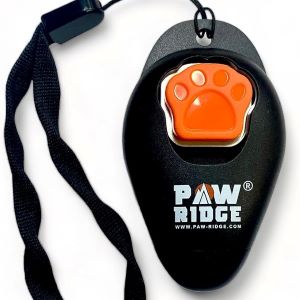As a dog owner, you may have always encountered a situation where your dog suddenly loses control. While this behaviour is not unnatural it is annoying especially when it happens while you are meeting someone or your furry friend starts barking at a stranger out in public. So, how to resolve this issue?
Well, you can try training them to ignore strangers. This can help you control their behaviour and make sure they don’t behave radically in future. Now, you are probably wondering – How to train my dog to ignore strangers? Let’s see how.
You Might Also Like:
How To Train My Dog To Ignore Strangers?
You can kickstart the journey of training your dog to ignore strangers by teaching them to maintain calm behaviour around strangers. This means that they will have to behave against their instinct. Because of their aggressive nature, when a stranger approaches they will start barking and this is something they do quite often. But, it shouldn’t become a habit.
For controlling such behaviour you can keep a lead on your dog and whenever they act aggressive, just pull the lead. This will suggest to them that their behaviour is not acceptable. However, if you pull hard, this can trick can backfire and they may get hyperactive and bark even more. You can also try using a muzzle for training them.

Now that we saw some basic tricks, let’s have a peek at some specific methods which you can leverage to train your dog in avoiding strangers.
#1 Food treats rewards
In this method, you need to have a friend act as a stranger and have them walk around your house. Observer the dog’s behaviour. If they are responding aggressively do not restrain or scold them. Gently, pat them and make them realise there is no threat.
When they stop barking, provide them with a food treat, this positive gesture will make them feel good. So, the next time they encounter a stranger they will remember and not bark, even if they do they will stop after a few seconds as they will remember the food treat you gave them.
#2 Cues method
Here you need to set some common cues such as “sit” and “stop”. Whenever the stranger passes by and you see the dog barking, use these cues to control their barking behaviour. You can also use a clicker to easily make this method work.
Don’t give treats or ignore their barking behaviour. Only reward the, when they stop being attentive to the stranger and shift their attention towards you. Slowly, you can also try not to give them rewards and train them to just obey these cues to ignore strangers.
#3 Distraction method
The distraction method is helpful when you are at the park and other public places. You will need various toys and different food treats with you for using this method. For example, if your dog starts barking at the people near the park, you can simply throw a ball in a different direction and play fetch with them. This will help you deal with their anxiety and calm their aggressive behaviour.
Further, if you and your dog are sitting in the park but, suddenly it starts barking, you can provide small food treats to make them sit back. In fact, you can also use different puzzle treats for keeping them busy while you are in such a public place.
#4 Interaction
This may seem weird or contrary but, is an effective method. In this method, you simply need to make your dog interact with the stranger at whom they are barking. Of course, you’ll need to ask the stranger whether they are comfortable helping you out.
But, if you think it’s too much you can always call your friend and ask them to randomly join your walk. This will help in registering such instances as normal behaviour. In fact, it’s necessary for dogs to have such interactions so that they don’t get anxious in a crowded environment.
#5 Prevention method
Many dog owners leave their dogs in their houses alone. This is one of the common reasons why dogs get aggressive in nature as they begin to bark at the slightest sounds or while encountering a mailman. So, you need to address the situation and try to prevent this.
You can try covering the windows with curtains, and make sure you close them when you leave for work. This will reduce the noise and also they won’t see any strangers. In addition, you can also consider turning off the doorbell or alarms to be safe.
Try using these methods and see if there is a change in your furry friend’s behaviour. If not, here are some more methods you can consider.
Additional methods
If you find that your dog has shown significant changes you can stick with that specific method or else try using some different method. Here are some additional methods you can consider to train them to ignore and also get used to a stranger’s presence:
- The crate method
Using a dog crate you can easily help your dog overcome the feeling of fear or uneasiness around strangers. To get the best out of this method, here are some tips you can follow:
- Have your neighbour swing by the house. Make sure your dog is in the crate. They might get excited or feel uncomfortable in their presence. In any case, allow them to calm down and once the neighbour is gone, give them a small treat.
- Repeat the first step, and this time make them interact with the neighbour. As your dog is already familiar with your neighbour, you will see them behave nicely. Again give them a treat.
- Now, you can call a different individual and observe your dog’s reaction. If they maintain calm behaviour you can make them interact with them instantly. If not, you can ask your neighbour to come while a different stranger is close to your dog. This will ease them up and make them realise the stranger is no threat.
Repeat this routine and you will see the dog will get accustomed to the presence of strangers. Increase the number of people every time you see a positive response from your dog’s side.
Now, you also need to train them to avoid their presence. For achieving this you can try using a reverse process after some time. This means, instead of making people interact with them, instruct them on maintaining a minimum distance and ignore the dog completely.
This will help your dog feel strange at first they will feel ignored and that’s when you can take them out of their crate and take them for a walk. It’s a long shot but, worth a try.
- Professional trainer
Hiring a professional trainer can help you train the dog easily. Yes, it can have some impact on your budget but, the results are visible. A professional trainer will have more tricks up their sleeve and your dog will get proper training on how to maintain good behaviour while encountering strangers.
- Strong harness pull
A dog with persistent aggressive behaviour will demand additional effort while controlling. A normal harness won’t work and also dog owners need a strong pull to handle their sudden movements. Using a strong harness can provide extra safety and keep the dog in control.
However, some dogs are even more violent and for managing them, owners can use double-ended leads. They provide better control over the dog and are strong enough to avoid any escaping.
Things To Avoid While Training The Dog Ignoring Strangers

While the training methods mentioned in the previous section will surely help you train the dog and control their behaviour, there are a few aspects you need to consider while you train your dog. These are the things you must avoid otherwise your dog’s behaviour may get worse.
- Avoid punishing the dog
Regardless of the approach you use, in the beginning, the dog will show resistance or radical behaviour. Don’t punish them for their behaviour, especially while you are out for a walk. Because if you will punish them for barking at a stranger they will develop a sense of fear in their minds and this can make them even more aggressive.
- Don’t yell at the dog
Remember, yelling at the dog is never going to solve the issue. It can have a devastating mental impact on their behaviour. So, whenever they bark at the stranger or turn aggressive, use the cues you have practised and help them calm their barking normally.
- Proper use of muzzle and harness
Using the muzzle and harness is important while you are out in a public area. It helps in controlling the dog’s behaviour and movements. However, if you do not use it properly, for instance, pull their harness with force or tighten their muzzle when they bark, they will also get more aggressive and probably try to escape as well. In fact, if your pull is strong, the harness can choke the dog and damage their organs.
- No forceful interaction
Sometimes dog owners push their dogs and make them interact with strangers. The intent is not bad, but, enforcing such activities will create mental pressure and they will get uncomfortable. So, go slow, allow them to get confident around the presence of other people and then you can make them interact with the others.
These are the aspects you need to keep an eye on. Make sure you remain patient and deal with the dog without taking an aggressive approach. Snapping at your dog will never work and if you treat them harshly, you risk damaging the bond you have with them.
FAQs
Why is my dog hyper around people?
Lack of attention from your side can often lay grounds for such behaviour, especially if your dog stays home alone for a longer period. The separation anxiety will make them feel unpleasant and when they are out for a walk the presence of many people around will make them tense and they end up getting hyper.
Are there any signs indicating that the dog is uncomfortable around strangers?
Yes, there are many signs which indicate the uneasiness and discomfort in dogs while being around strangers. You may see the dog barking, snapping, growling, approaching the stranger, or simply hiding from them. Some dogs have different behaviour and may not exhibit such signs but, this doesn’t imply they are comfortable. Such dogs will lick their lips, make their body stiff and yawn.
Is it possible to train a dog to not bite a stranger?
Yes, you can definitely train your dog to not bite a stranger. You can use different training methods such as obedience, and food treat, and use a muzzle or harness to have better control. However, regardless of the training, aggressive dogs can snap and bite a stranger, so you need to train them more at home and work on their triggers.
What happens if my dog bites a stranger UK?
There are legal consequences for a dog biting a stranger in the UK. As per the government’s legal guidance on dangerous dogs, dog owner is punishable to the extent that they may face prison punishment. If the dog biting ends up in the person dying there is a 14 years of imprisonment.
How do you get your dog to stay next to you when off-lead?
To achieve this your dog will require extensive training in following your commands. This means they should stop when you instruct them to and walk in the direction you point. If you take the lead off with less practice, your furry friend may end up hurting a stranger or escaping when off-lead while you are out in public.
How To Train My Dog To Ignore Strangers – Conclusion
So, in conclusion, the simplest way you can train your dog to ignore strangers is just by avoiding different people you encounter while walking with the dog. This should work fine and if not, there are plenty of methods you can choose from. Yes, they involve you taking the help of your friend or neighbour but, will work out just fine.
In addition, if your dog tends to get excited about seeing or meeting another individual, you can try socialising. This will help them remain calm and not bark while being in a public place. Still, if the aggressive barking behaviour or the discomfort feeling while meeting a stranger persists, you need to take your dog to see a behaviourist.






